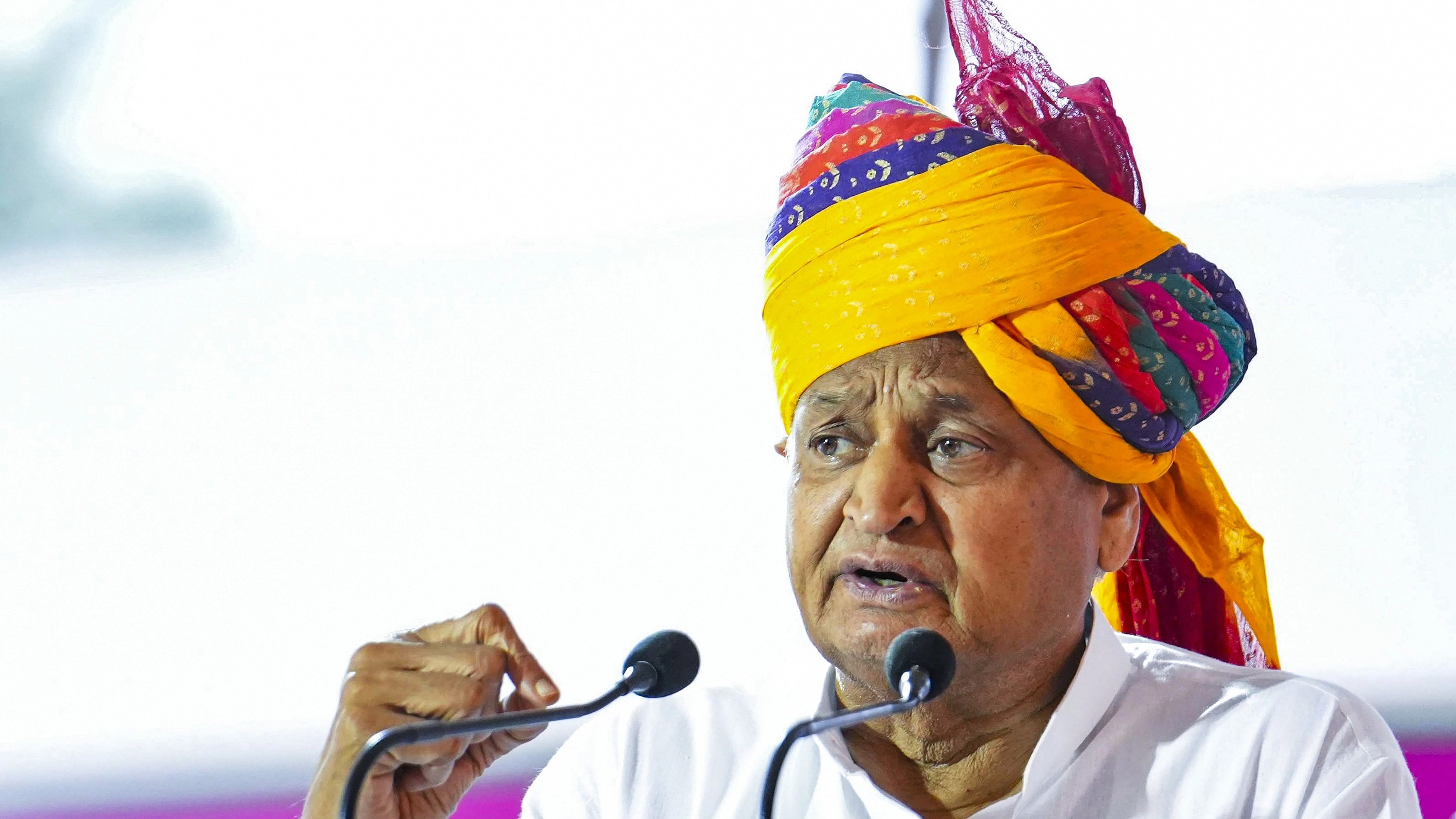
Rajasthan Chief Minister Ashok Gehlot addresses a public meeting ahead of the state Assembly elections, at Luni, in Jodhpur district.
Credit: PTI Photo
There are many similarities between Ashok Gehlot and Mohan Lal Sukhadia — the former Rajasthan chief minister who ruled the state with an iron fist for 17 years between 1954 and 1971.
Both belong to non-dominant communities — Sukhadia was a Jain while Gehlot comes from the OBC community. Sukhadia, like Gehlot, challenged the Congress’ central leadership and pipped Nehru-backed candidate Jai Narayan Vyas to become the chief minister.
And like Sukhadia, Gehlot mastered the art of utilising the opposition to rein in dissent within his own party.
But unlike Sukhadia, Gehlot, the three-time chief minister of Rajasthan, has never been able to win a consecutive term as CM, though he has been in power for 15 years now since assuming office for the first time in 1998.
Now with less than one week left before the electors elect a new government, the Jadugar of Jodhpur is making one last attempt to buck the trend.
Caste Conundrum
Some 30 km from the state capital Jaipur, a small group of farmers sit near a barber’s shop to discuss the upcoming elections. Across caste lines, there is a clear ring to the slew of social welfare schemes introduced by the Gehlot government. But will it be enough to take Congress past the halfway mark?
This village is part of the Jhontwara constituency, where sitting MP from BJP Rajyavardhan Rathore is pitted against state NSUI president Abhishek Choudhary. Jats, the dominant intermediary caste here, seem to be mobilising behind the Congress.
“Gehlot’s health scheme has had its impact,” says Daulat Ram emphatically.
Others- mostly non-Jat OBCs- don’t disagree. But remain non-committal on their preference. Support from the vocal land-owning caste at times counter-polarizes numerically less dominant social groups. It’s a common phenomenon in Rajasthan which has never had a Jat CM though the community sends more than two dozen MLAs to the Assembly every election.
Local anti-incumbency
In Jhontwara, the Congress has replaced its sitting MLA to cut down on anti-incumbency. Overall, the party has dropped only 23 out of 113 lawmakers. That’s far less than what was expected, especially in the face of baggage amassed by sitting the MLAs.
Gehlot understands it better than anyone else. And yet he was reluctant to axe the non-performers. Precisely the reason why he wants to make this election presidential, as he says “Gehlot is the candidate in all 200 seats in Rajasthan.”
“For the Congress, the crucial factor would be whether Gujjars and Malis remain with the party as was the case last time,” says Ashfaq Kayamkhani, a social worker from Sikar.
But that’s a stiff task considering Gujjar as a community has traditionally been aligned to the BJP and 2018 was an aberration due to Pilot’s positioning as the state president.
Centre of polity
Gehlot is also up against the inherent character of the state’s polity as it has evolved in the last 20 years. 2003 was in many ways a watershed moment in Rajasthan politics when BJP led by Vasundhara Raje won a clear majority for the first time.
Ever since, in a one-on-one battle with Raje, Gehlot has won narrow victories, while Raje has bounced back to trounce Congress by huge margins.
The centre of gravity of the state polity has clearly shifted right of the centre.
Therefore, the countervailing thrust to counter the BJP’s bid to capture power has to be decisive and incremental. Ambiguity on leadership issues in the BJP and Vasundhara Raje’s measured campaign have given Ashok Gehlot some elbow room. But would it be enough to surpass Sukhadia’s record as chief minister? The task is daunting.
Congress’s numbers would depend on whether Gelhlot’s version of labharthi politics translates into votes in the polls.
The chief minister is heavily banking on his ability to mop up the support of the beneficiaries, especially the numerically small caste groups who cumulatively form an amorphous yet substantial voting chunk.